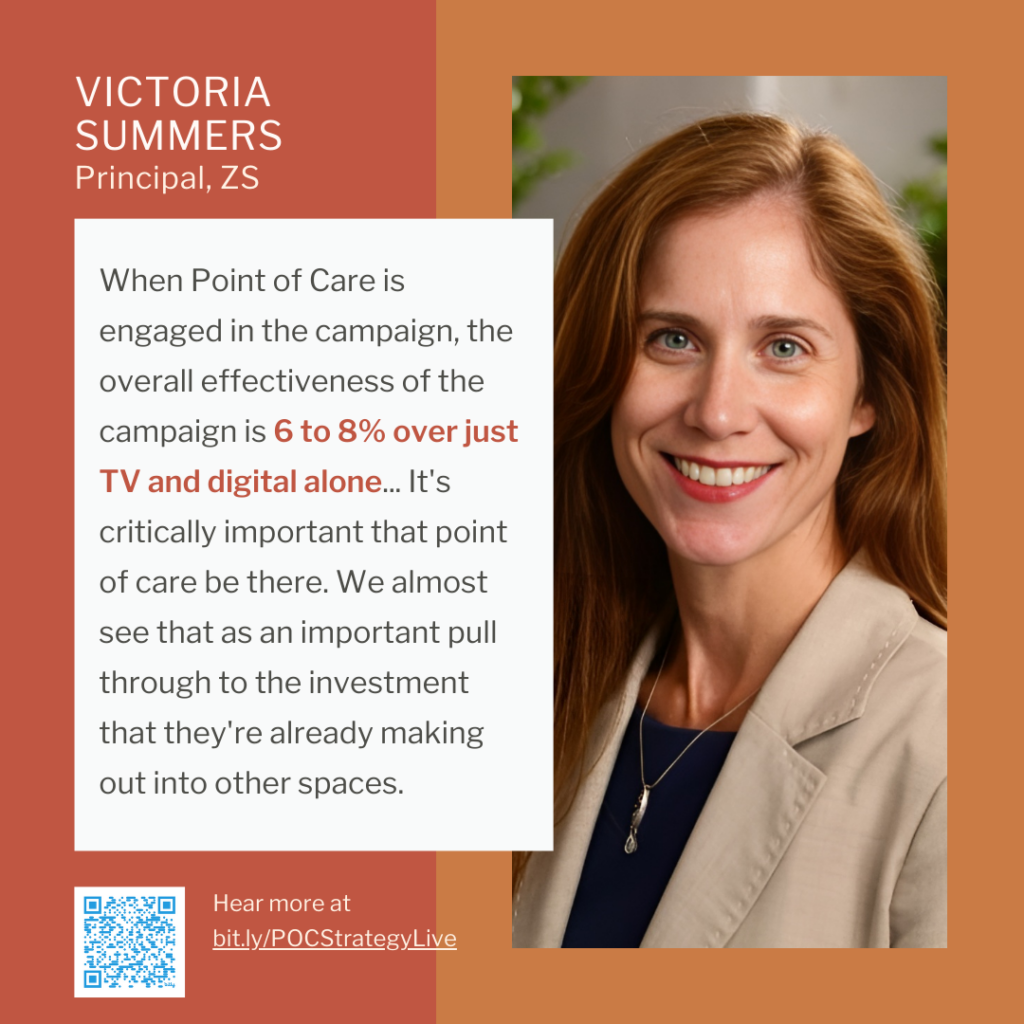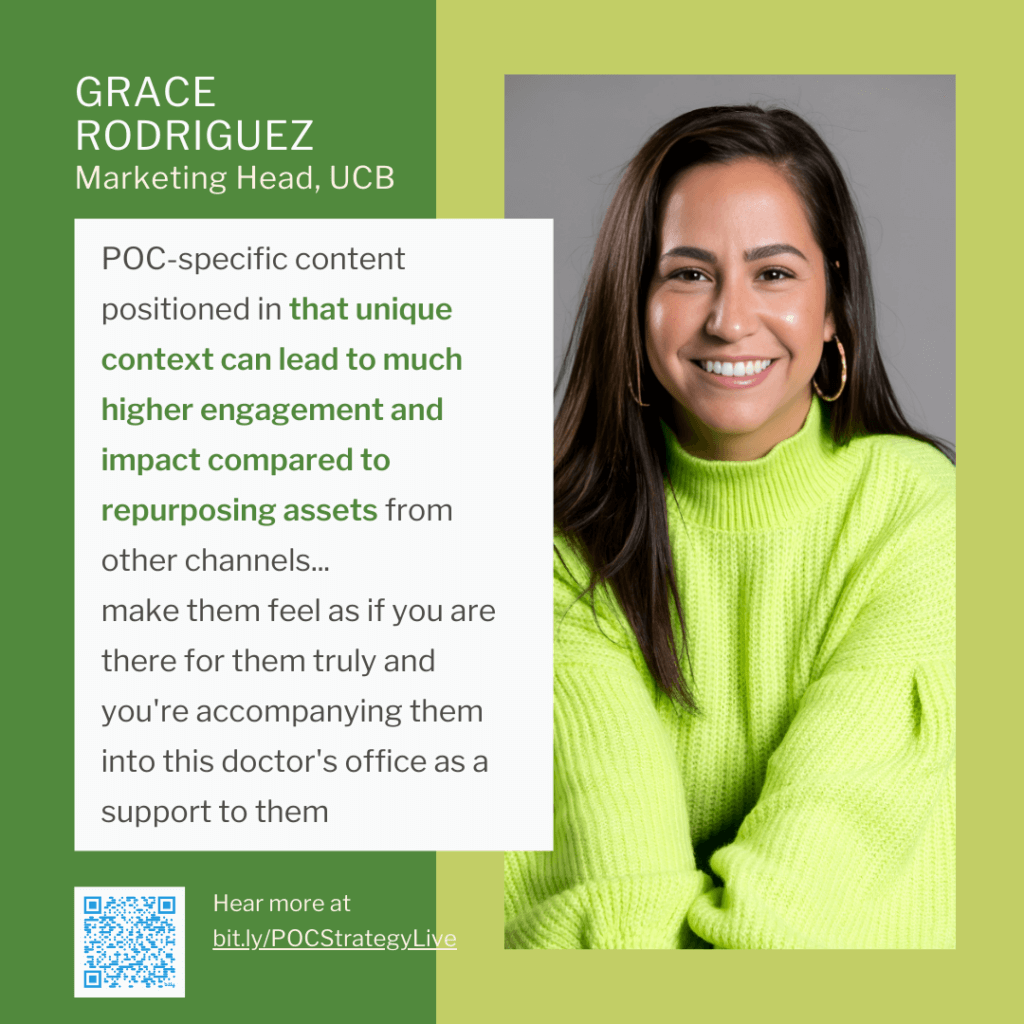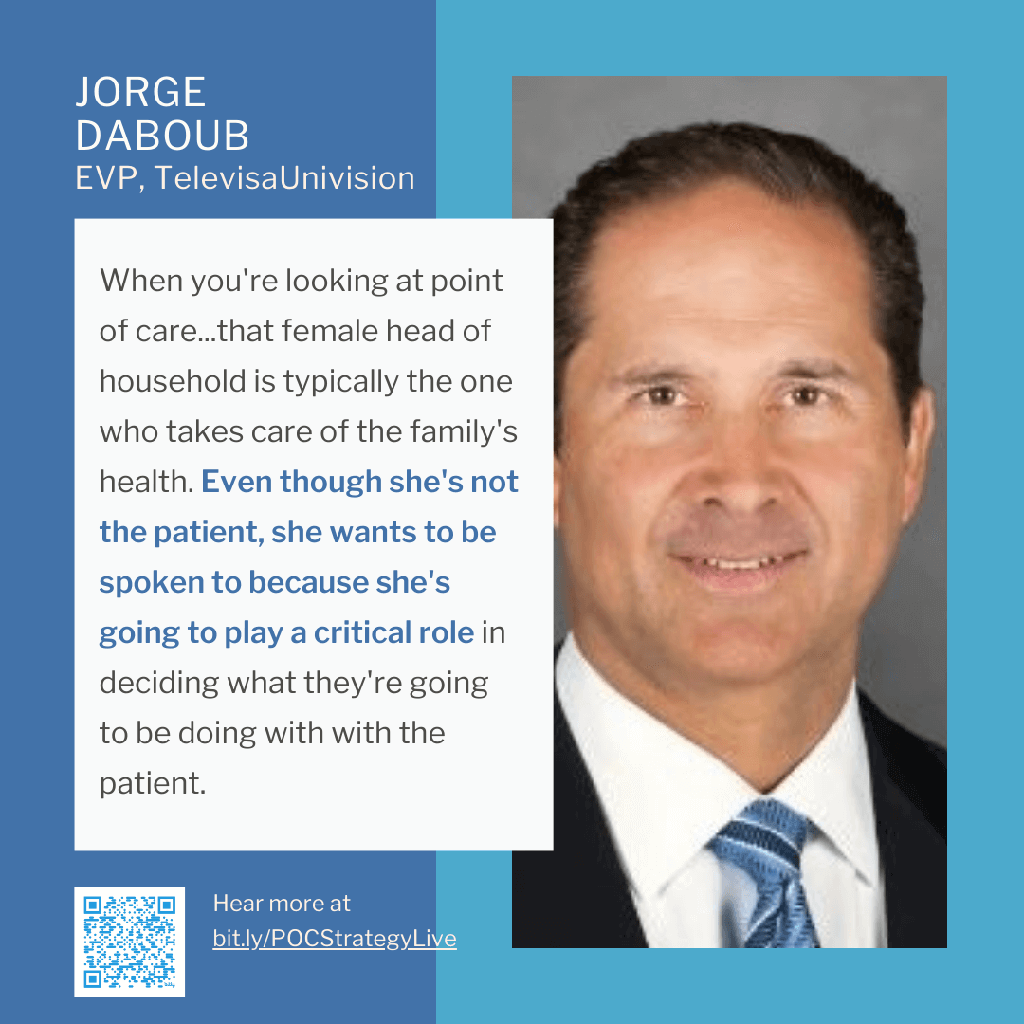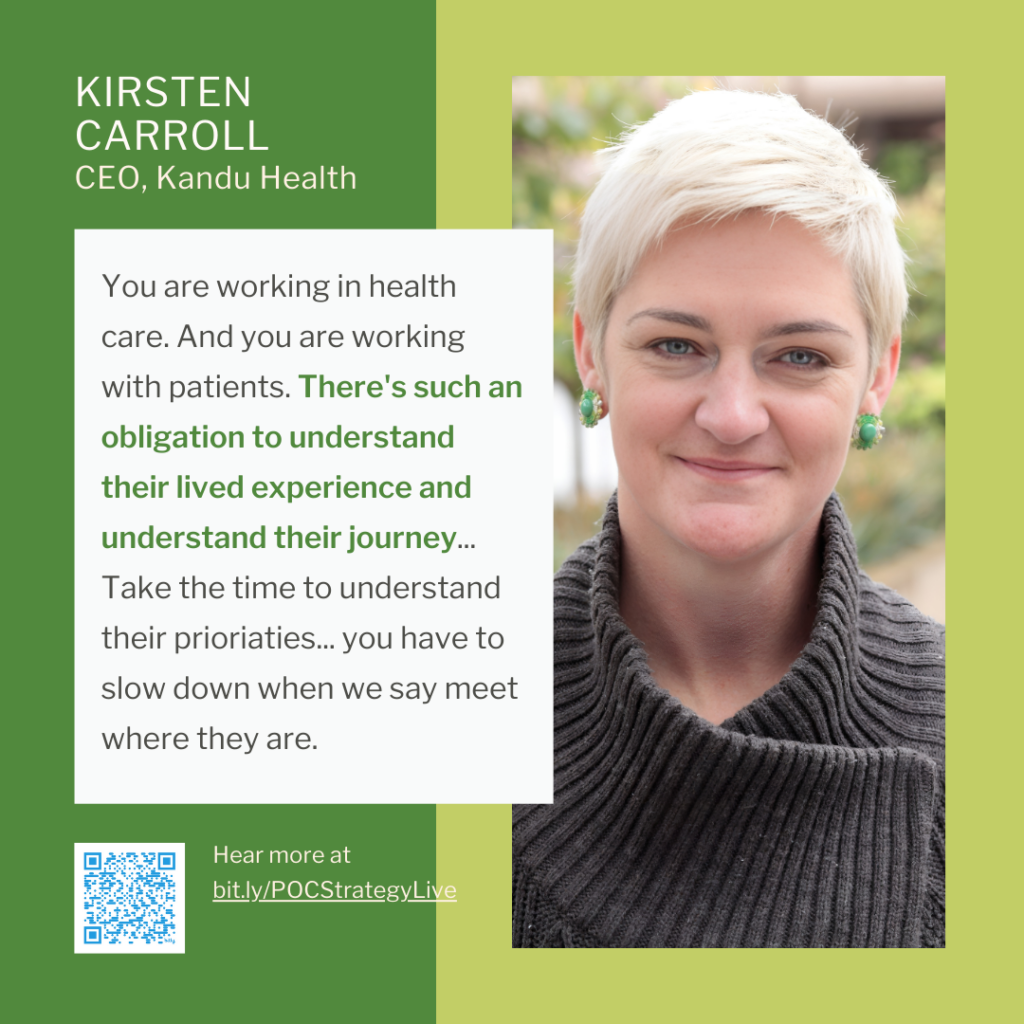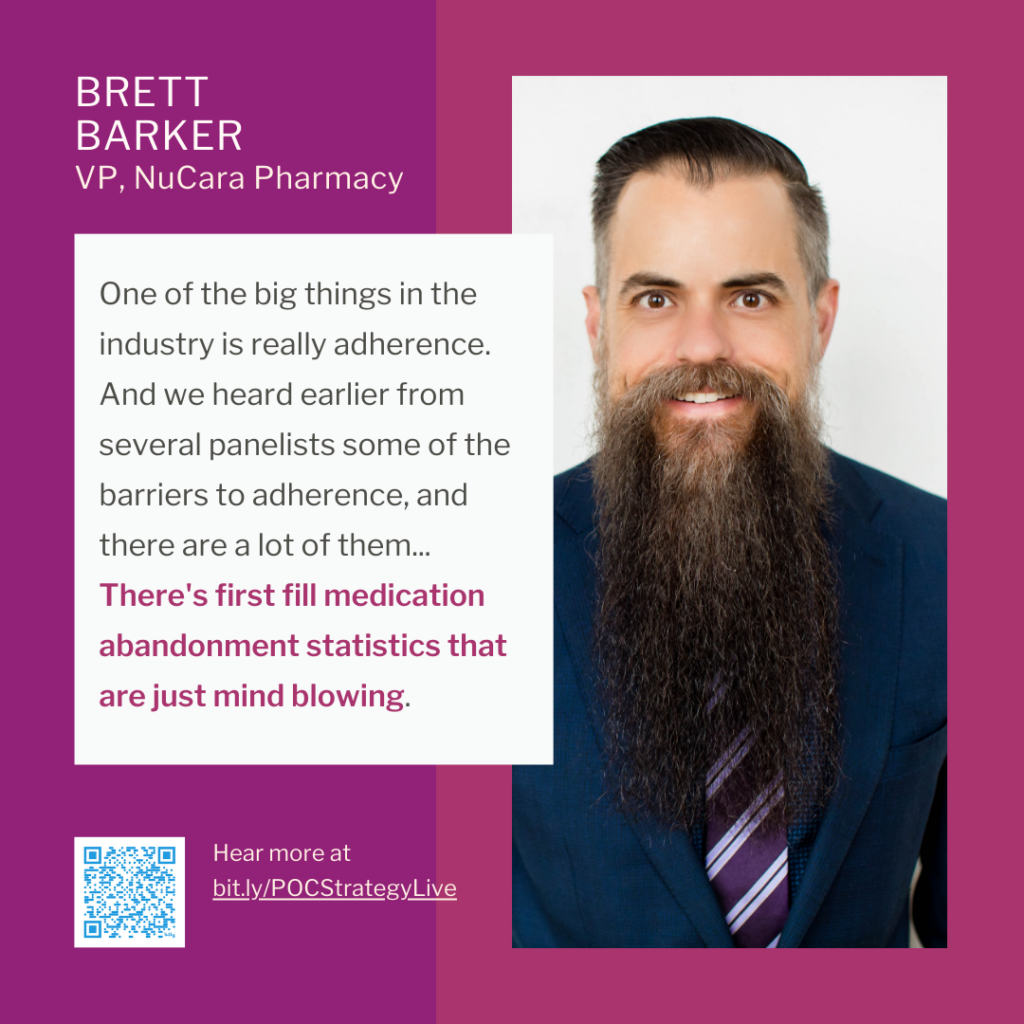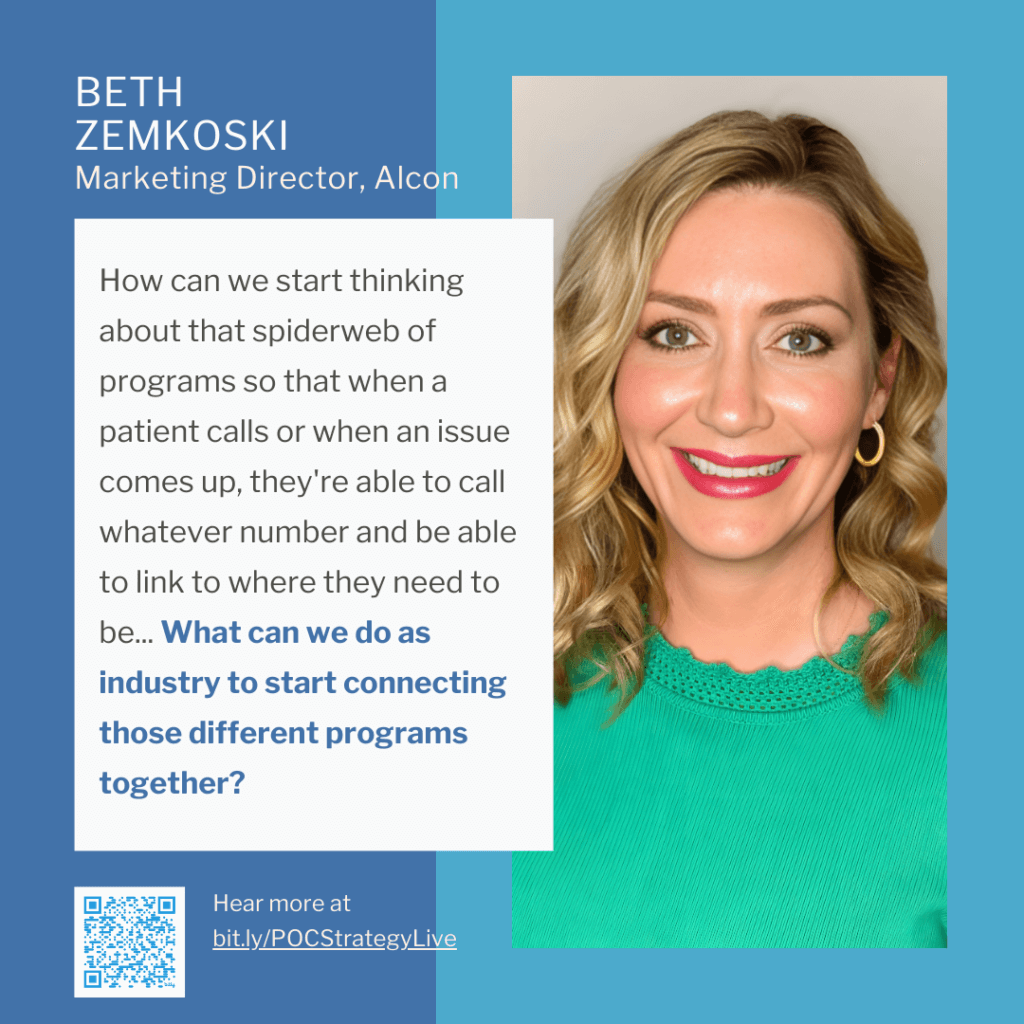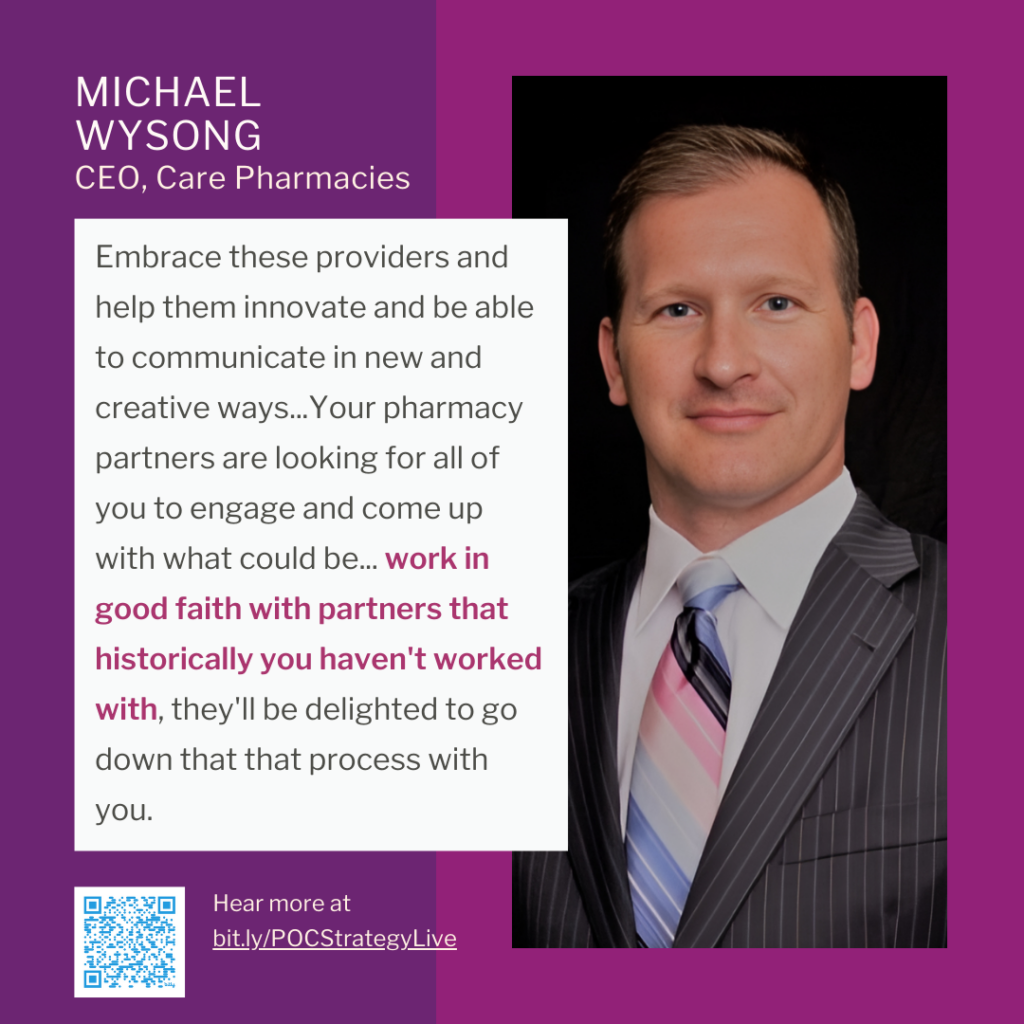Healthcare Leaders Cross Aisles to Agree on POC Expansion
The POC NOW 2024 healthcare marketing summit was a resounding success, offering unparalleled insights and strategies for everyone invested in (or just curious about) more effective Point of Care (POC) marketing. Across healthcare marketing verticals, leaders ranging from Big Pharma to Patient Advocacy talked about the growing need for POC expansion to benefit patients, providers, and brands alike. We’ve narrowed in on top takeaways for you, straight from top marketing and healthcare industry leaders.
Throughout the day, a clear theme emerged: the undeniable impact of Point of Care (POC) marketing across healthcare verticals. Speakers and panelists shared compelling tactics and insights to enhance the effectiveness of POC campaigns, emphasizing its vital role in healthcare marketing strategies. The summit covered a wide range of topics, including:
- Patient journeys and marketing shortfalls
- Pharmaceutical leader insights on POC
- Innovative adherence lifts in the care journey
- The future of the Pharmacy as a POC
- Point of Care effectiveness research
- HCP workflows and perspectives
- EHR strategy, AI, and impact
- Engaging Hispanic consumer care audiences
- Inclusive marketing strategies
Here are our top healthcare marketing takeaways from the Summit that will change the way you think about, market in, and integrate the POC channel in your marketing and engagement strategies. Dive deeper into these highlights by visiting the sessions above or our POC NOW summit website, and unlock the full potential of POC marketing for your healthcare initiatives .
#1 Point of Care marketing is a crucial component of effective healthcare marketing strategies.
Permeating all sessions was the value of integrating the POC channel in healthcare marketing strategies, especially when optimizing for the channel and care journey nuances. Original POC research by ZS and experiences from Pharmaceutical leaders showed significant improvement in overall campaign effectiveness and ROI (upwards of 5:1) with the addition of POC strategies. These compelling stats reveal a significant opportunity for marketers and agencies to increase their investment in POC.
- By leveraging data, AI, and new ways of targeting in the EHR, healthcare marketers have an unmatched opportunity to be the last impression and next best step in HCP treatment decisions.
- The POC is a bigger part of HCP workflows than just “in office”. With reduced rep access, POC needs to work harder and take on greater responsibility in delivering information to HCPs and patients..
- HCPs and patients are eager to have clearly written and personalized information and support materials for providers, staff, unspecialized NPs, and patients at effectively timed points in the care journey. This is especially welcome around Rx expectations and side effects.
- Proactive engagement and POC materials in care journeys can significantly increase adoption and adherence for increased lifetime value.
- Melissa Wagner (Merck) highlighted the need to look beyond just the numbers and consider the strategic role of POC in driving patient engagement and adherence.
- Grace Rodriguez (UCB) emphasized that POC-specific content positioned in that unique POC context can lead to much higher engagement and impact compared to repurposing assets from other channels.
#2 Understanding unique cultural factors influencing patients is a must for impactful messaging.
A recurring theme throughout the POC NOW Summit was the importance of understanding and tailoring messaging to diverse patient populations. Speakers across panels highlighted the missed opportunity and shortfalls that come when messaging is misaligned with cognitive, emotional and physiological states, cultural contexts, and community structures.
Marketing best practices include checking the data, incorporating underrepresented populations from the start, and crafting messaging that is grounded in a tested understanding of the unique beliefs, behaviors, and cultural factors, as well as health states and impairments, that influence how different people and groups engage with and respond to healthcare information.
Inroads with the Hispanic Healthcare Consumer
- Nearly 1 in 5 Americans are Hispanic, and this number is growing. Marketing to the Hispanic audience requires understanding the beliefs, messages, social structures, and creative that resonate with Hispanic consumers
- Marketing should target caregiver communities and key players in Hispanic households for optimal effect. Culturally, care decisions are motivated by and happen within the family, rather than being individual journeys.
- Pharmacies and pharmacists play a prominent role in the Hispanic community’s health continuum. The cultural increased receptivity to pharmacy, pharmacists, and brand names means that pharmaceutical companies have an opportunity to leverage their reputation by directly marketing to Hispanics. All marketers would benefit from including pharmacy in their point of care strategies to effectively reach this population by leveraging the trust and influence pharmacies have within the Hispanic community.
Inclusive Healthcare Message Practices
- Millennials are a growing healthcare consumer set that is being diagnosed earlier
- Healthcare marketers must prioritize continuous research, data analysis, and adaptation to stay ahead of the evolving needs and preferences of patient populations that are inclusive of factors impacting message effectiveness, including: ableness, age, multiculturalism, and social determinants
- Health journeys, disease states, and aging can include temporary or permanent impairment as well as emotionally intense experiences that lower messaging receptivity, adoption, and adherence. Messaging in the Point of Care has authority and trust, but best practices include accessible and clear language and formats, patient-minded support, and print materials in-office and to take home in addition to digital.
- The American Heart Association panel stressed the importance of understanding the factors that contribute to an individual’s position in the healthcare lifecycle and the barriers they may face in creating high-impact messaging at the POC.
- In the Patient Journeys session, Kirsten Carroll (Kandu Health) emphasized the importance of delivering information that aligns with patient experiences and socioeconomic status at each recovery stage, as these factors significantly influence their receptivity to healthcare messaging.
- Across panels, speakers echoed the need for take-home materials that can be better processed with care partners outside acute care moments when people can digest information, as highlighted by oncologist David Eagle.
#3 Collaboration across healthcare verticals is key to patient engagement strategies and improved outcomes.
Stronger partnerships between healthcare providers, pharmacies, and pharmaceutical companies are crucial for developing patient-centered engagement strategies that boost medication adherence and improve overall outcomes.
Understanding Patient Adherence Barriers
- Affordability is a top concern for patients and can lead to not filling prescriptions, incorrect or infrequent medication use, or abandonment. Opportunity areas to solve for cost as an Rx deterrent:
- Identify economic barriers or social determinants of health that may limit pharmacy access
- Provide copay and couponing information
- Offer patient support hotlines, materials, or guides that answer financial concerns in clear, transparent ways
- Easy-to-use resources that transparently provide competitive pricing and pharmacy options
- Overly complicated materials, complex health journeys, and too many platforms can confuse and lose patients
- Patient-centered engagement strategies can resolve adherence and abandonment issues, including simplified touchpoints, personalized messaging, and patient support strategies. (Beth Zemkoski, Alcon)
- Providers and technology can create tools and resources to help patients properly use and report on medication (Brett Barker, NuCara)
Leverage the Role of Pharmacy in Patient Care
- Pharmacies are well-positioned to address social determinants of health and provide personalized support to patients by leveraging their trusted relationships and deep understanding of their communities
- Pharmacists are exceptional eyes-on-the-ground, positioned to observe and gather information on patients that would clarify why they are not taking medication.
- Training pharmacists to identify social determinants of health and provide more holistic patient care can improve treatment outcomes.
Covering Care Journeys through Collaboration
- Collaboration across healthcare verticals can lead to innovative pharmacy services such as HCP referrals, home delivery, health and Rx alerts, expanded patient support, side-effect management, and increased accessibility
- Expanding pharmacy services can benefit healthcare systems, providers, patients, manufacturers, and pharmacies by offering more accessible POCs, equipped with robust Rx enablement, and reducing silos
- Holistic care drives results, but currently patients are often the single source of truth for prescribers, and pharmacies are equally blind to health histories.
- Encouraging agencies, pharma, and POC vendors to work collaboratively can help close messaging gaps and create stronger patient experiences
- Collaborating with vendors on creative on original content for POC is highly desired by patients and HCPs, according to research
- POC-specific creative can be done cost-effectively when integrated into planning from the start and is significantly more impactful than repurposed content
- Leverage vendor expertise to help identify and customize marketing strategies and creative
#4 Leveraging technology delivers precise and personalized messaging at the point of care.
Technology is increasing POC effectiveness and measurement, allowing customized targeting, trigger based ads, identifying predictive treatment options, removing clinical decision silos, and overhauling patient outcomes.
- Telemedicine and new patient platforms are helping extend POC engagement
- Leveraging data, AI, and new ways of targeting, healthcare marketers have an unmatched opportunity to be the last impression and next best step in HCP treatment decisions to improve patient outcomes.
- An AI mode, trained on EHR data, accurately predicted relapses 96% of the time, enabling the extended care team to start writing prescriptions earlier. This resulted in the AI to capturing over 20% more patients during a critical treatment window, a significant impact on script volume. Maria Cipicchio (OptimizeRx) shared this instance, highlighting the power of leveraging EHR data in the POC for marketing impact.
Recap of Must-Know Highlights and the POC NOW Summit
The POC NOW Summit provided a wealth of insights, strategies, and data-driven approaches to help marketers and brands navigate the complex healthcare landscape and drive better patient outcomes through effective point of care marketing. The key takeaways were:
- Plan for POC from the beginning: Integrate Point of Care (POC) marketing as a crucial component of effective healthcare strategies to drive higher campaign effectiveness, ROI, patient engagement and adherence.
- Constantly research and question who your audience is: Understand the unique beliefs, behaviors and cultural contexts of diverse patient populations to create resonant, impactful messaging.
- Think holistically about patients, and collectively across verticals: Strengthen collaboration between healthcare providers, pharmacies, pharma companies and agencies to develop more patient-centered engagement strategies across the care journey.
- Stay true to take-away materials, but embrace technology by use case: Leverage data and technologies to enable precise targeting and personalized POC messaging that improves clinical decisions and outcomes.
By leveraging technology, understanding diverse patient populations, collaborating across healthcare verticals, and continuously adapting to the evolving needs and preferences of patients and healthcare providers, the industry can create more impactful and effective POC marketing strategies. The success of the POC NOW Summit demonstrates the growing importance of point of care marketing and the healthcare community’s commitment to innovation and collaboration in this rapidly evolving field.
